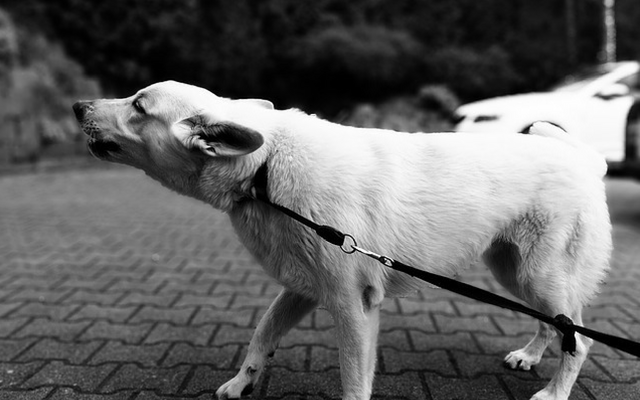
There’’ s no rejecting the reality an aggressive pet dog is possibly harmful. It’’ s an issue that needs attention from an expert pet behaviorist, however there’’ s a lot more to canine hostility than many people recognize. Hostility is among the most typical behavioral concerns seen in canines, and it’’ s among the leading reasons that pet dogs are euthanized and given up to shelters. Coincidentally, it’’ s likewise among the most misinterpreted subjects in the canine world. We’’ re here to clarify and eliminate these typical misconceptions about pet dog hostility.

.1. A ““ great ” pet dog is a canine that ’ s never ever aggressive.
Similar to a tail wag or get rid of , aggressive habits is an entirely regular kind of canine interaction. Your canine can ’ t come out and inform you when they ’ re afraid, annoyed, or mad, and snapping is their desperate effort to make you comprehend. Grumbling, barking, snapping, and even biting are all common methods which dogs settle disputes. Even “ excellent pet dogs ” that master obedience class and love hanging out with individuals have actually been understood to periodically turn to aggressiveness. PetCoach discusses it well by stating,
““ Expecting your pet dog to never ever do any of these things [revealing hostility], no matter what occurs, is a bit like anticipating an individual to go through life without ever having a single difference or argument with somebody else–– not extremely sensible in either case!””
. 2. Aggressiveness takes place out of the blue.
When individuals state a canine assaulted them ““ out of no place, ” all they ’ re actually stating is they weren ’ t focusing on the pet’’ s body movement. Canines practically never ever attack without caution. If the canine has a psychological condition that hinders cognitive function.), (The one exception is A pet dog’’ s aggressive habits is constantly in reaction to a trigger, and when you understand what that trigger is, you can find out to anticipate their response. Contrary to common belief, canines are rather proficient at interacting their pain in non-aggressive methods. The problem is, people are’’ t proficient at checking out those signals prior to the scenario intensifies.
Before a pet attacks, their body movement shows what they’’ re thinking. Yawning, licking their lips, and declining to look straight at somebody are all indications of a stressed pet dog. They handle a ““ frozen ” posture where their body is stiff and their eyes are unblinking and broad. The indications may be subtle to the human eye, however when you understand what to try to find, aggressiveness is among the most foreseeable canine habits there is.

.3. An aggressive pet is constantly an aggressive canine.
Many individuals believe that when a pet reveals indications of aggressive habits, they’’ re no longer safe to be around. This sort of presumption is what lands numerous healthy, friendly pets in shelters and on euthanasia lists. A pet dog may roar at a groomer who comes at them with nail clippers, however that sort of worry aggressiveness doesn’’ t typically equate into other parts of the pet dog’’ s life.
.
In this circumstances, context is essential. When the trigger is eliminated (in this case the trigger is the groomer displaying nail clippers), many canines will return to being their typical, friendly selves. They’’ re aggressive around nail clippers since they’’ ve established an unfavorable association with having their nails cut, however they have no issue with engaging with individuals on a typical basis. Their aggressiveness doesn’’ t specify them, and they wear’’ t are worthy of to be quit since of the misconception that is does.
.4. All hostility is the very same.
Aggression in pet dogs is normally comprehended as a set of habits suggested to damage another animal or threaten or individual. It normally begins with a caution, like snapping or roaring, and intensifies into a harmful physical conflict. The physical actions may be the very same from one canine to the next, however that doesn’’ t imply all canine hostility is the very same.
.
There are in fact a number of various sort of canine hostility consisting of frustration-elicited hostility, worry hostility , territorial hostility, predatory hostility, protective hostility, and discomfort hostility. To identify what type of hostility a pet is showing, consider what took place instantly prior to the attack, what/who bore the focus of the hostility, and what appeared to stop it. The only method to assist a pet resolve their behavioral problems is to comprehend what triggered it in the very first location. ASPCA states,
““ An advantageous plan for comprehending why your pet dog is aggressive is based upon the function or function of the aggressiveness. If you consider hostility by doing this, you can identify what inspires your pet dog to act strongly and recognize what she wishes to acquire from her habits.””
.  5. Aggressive canines are born that method.
5. Aggressive canines are born that method.
It’’ s real some pets have hereditary makeups that make their characters more assertive than others, however that seldom equates into aggressiveness. Individuals like to blame nature for a pet’’ s aggressive habits, however the fact is, domestic pet dogs are not naturally aggressive towards individuals. Hostility is something they discover through life experiences. Some do it as a defense reaction to keep prospective risks at bay, and others turn to snapping and grumbling due to the fact that of particular occasions that took place in the past. In either case, something needed to take place to make them think snapping is the best/only option to a specific issue.
.6. Specific types are more aggressive than others.
Today it’’ s pit bulls, and in the past, Rottweilers, Dobermans, Mastiffs, and even German Shepherds have actually all suffered under the examination of misdirected stereotypes. There have actually been numerous clinical research studies on the subject showing aggressive habits is simply as most likely in ““ family-friendly ” types as it is for the types usually prohibited in cities and public real estate. The inaccurate concept that there are aggressive pet types leaves numerous pets deserted in shelters and maltreated by individuals who wear’’ t comprehend them. If you ’ re still not persuaded, read this research study released in ScienceDirect . It states,
““ These information recommend that although basic qualities of owners and pets might be an aspect at population level, it would be unsuitable to make presumptions about a private animal’’ s danger of hostility to individuals based upon qualities such as type.””
. 
.7. Aggressiveness is just an issue in huge pet dogs.
If you’’ ve ever had your ankles nipped by a tough Chihuahua, you currently understand lap dogs are simply as most likely to be aggressive as huge pet dogs. Little type pets frequently have actually an issue called ““ Napoleon Syndrome . ” It ’ s not a real medical condition, however it ’ s what takes place when lap dogs overcompensate for their stature by snapping with aggressiveness.
.
It ’ s real a bite from a lap dogwon ’ t do as much damage as a bite from a huge’pet, however that doesn ’ t indicate lap dog hostility doesn’’ t matter. When their little canine “ acts all difficult, too numerous little pet owners believe it ’ s adorable. ” But bites “from lap dogs constantly injure, and there ’ s the possibility they can end up being contaminated. Not resolving the problem of aggressiveness in a little type canine isn’’ t assisting the pet, and it ’ s absolutely not assisting your ankles.
.8. Supremacy causes aggressiveness.
In the late 1900s, scientists believed they had a strong theory worrying canine supremacy. They took a look at how captive wolves communicated with each other and kept in mind on pack structure. When the research study was ended up, researchers made the presumption that due to the fact that pets are come down from wolves, domestic pets need to act likewise to the wolves in the research study. It ended up being extensively accepted that ““ dominant ” canines utilize force to dismiss those that threaten their status much like the captive wolves did.
The problem, nevertheless, is those researchers were incorrect. It has actually given that been shown that domestic pets do not act the like captive wolves, and so-called ““ dominant ” habits does not result in aggressiveness. That error has actually given that been acknowledged, however it’’ s cause a misconception about what supremacy in fact suggests when it pertains to pet dogs. Australia Veterinary Behaviour Interest Group is working to set the record directly and states,
““ It is not precise to explain a pet as having a dominant character. The word needs to just ever be utilized to explain a single interaction in between 2 people contending for a resource such as a piece of food or a toy. One pet will normally quit the contest and leave the resource for the other. Because scenario, the person who wins is dominant.””
.

.9. Pet dogs need to be penalized for revealing aggressiveness.
When a pet grumbles, lunges, or snaps, lots of people leap to doing what they believe is the most suitable response: penalty. What they in fact wind up doing, nevertheless, is making the issue even worse. Scolding and striking a pet dog that is certainly currently scared, worried, or uneasy will press their feelings even further into the red. A research study performed in 2009 discovered that when struck or kicked, 43% of pets react with more aggressiveness, and utilizing any sort of confrontational training strategy typically leads to a boost in hostility.
It’’ s essential to bear in mind that aggressive actions are a type of interaction, and by roaring or perhaps biting, your canine is attempting to inform you something. Pet dog fitness instructors consisting of Victoria Stilwell suggest utilizing a mix of favorable support and ecological management to assist a canine gotten rid of whatever it is that’’ s making them seem like aggressiveness is the best thing to do.
The post 9 Myths About Dog Aggression appeared initially on iHeartDogs.com .
Read more: iheartdogs.com





Recent Comments